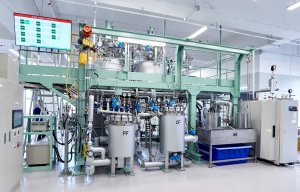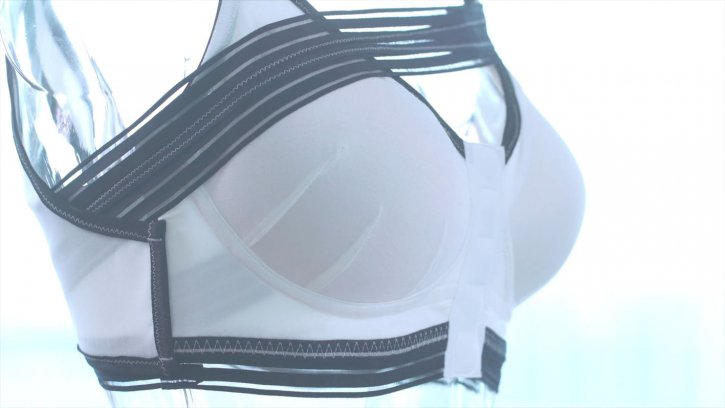
HKRITA technology makes the 2022 R&D 100

Showcasing expertise in advanced textile products, material science, textile recycling, wastewater treatment and regenerative agriculture.

24th April 2024
Innovation in Textiles
|
Hong Kong
The Hong Kong Research Institute of Textiles and Apparel (HKRITA) has received the 2024 Edison Gold Award in the Social and Cultural Impact category for its development of a comfort bra to aid recovery from mastectomy.
The bra takes into account requirements related to age, BMI and body shape via ergonomic design and a 3D printed structure to provide better thermal comfort, improving body balance for recovering patients at a lower cost.
HKRITA also won a total of five medals in the 49th International Exhibition of Inventions of Geneva, including a gold medal for its development of a process for dye removal from denim textile wastewater by a combination of adsorption and regeneration. In this process, metal-doped alumina is used as the adsorbent, trapping dye molecules on its surface through electrostatic and van der Waals forces, leading to a clean and colourless solution of the dye wastewater. Once the adsorbents become saturated, they are regenerated by ozonated water, converting the dye molecules on them into harmless substances like water and carbon dioxide. When the adsorbent returns to resembling its original brown colour, it is ready for another adsorption cycle. This approach minimises the disposal of used adsorbent and the treated water meets the reuse standard in denim production. It is said to be much cheaper than the conventional activated carbon adsorption process.
A second Genava gold medal was claimed by HKRITA for its development of a fluorine-free and bio-based fabric for durable water and oil repellency.
This is based on a surface modification method with fluorinated compounds. By utilising by-products and biopolymers, a multi-layered composite barrier has been created, effectively providing durable water and oil repellent properties to the fabric. These functions can withstand washing, ensuring the longevity of the treatment. This approach is environmentally friendly and fluorine-free, making it a sustainable choice for outdoor apparel and working uniforms.
Noise insulation
A lightweight fabric-based breathable metamaterial for low frequency noise insulation, a denim fabric cotton recovery by mechanical warp weft separation process, and a swelling-controllable composite tubular fabric for regenerative agriculture all received further recognition for HKRITA during the International Exhibition of Inventions of Geneva.
Acoustic metamaterial technology has been combined with an energy adsorption coating for low frequency noise insulation in industrial environments. The use of a breathable fabric metamaterial for low frequency noise control results in a simple and lightweight setup. In addition, the material provides excellent air permeability for the thermal control and heat dissipation of machines, achieving a rate of 1.5 cubic metres per square centimetre per second. These features make it suitable for a wide range of applications.
An AI driven mechanical recycling system to extract the reusable indigo-dyed warp yarns from denim fabrics is a further innovation. Since warp yarn is typically made with dyed cotton of higher fibre quality, the separated warp yarn can be recycled into denim yarn without the need for dyeing. The mechanism relies on direct mechanical extraction, without the use of chemicals. Additionally, an AI system identifies fabric structures and measures warp yarn density and denim orientation, resulting in a separation efficiency of over 90% for warp yarns.

Finally, an eco-friendly soil management system using biodegradable composite fabrics and real-time monitoring technologies has been pioneered. It incorporates a unique process for creating a swelling-controllable composite tubular fabric with a mixture of hemp and PLA, through fibre degumming and specialised yarn and textile fabrication techniques. The composite fabric serves multiple functions, including irrigation, weed control, insulation, moisture retention and nutrient preservation. The composite materials used in the system are fully biodegradable, contributing to sustainable development. Additionally, multi-cyclic diffusion principles were applied to ensure efficient transport of water and nutrients while minimising deep soil moisture leakage and preserving nutrient levels for plant growth.
“As an applied research centre, we are dedicated to conducting impactful research on a wide range of topics with societal relevance,” says HKRITA CEO Edwin Keh. “Our participation in these two events highlighted our commitment to making a positive difference.”

Business intelligence for the fibre, textiles and apparel industries: technologies, innovations, markets, investments, trade policy, sourcing, strategy...
Find out more